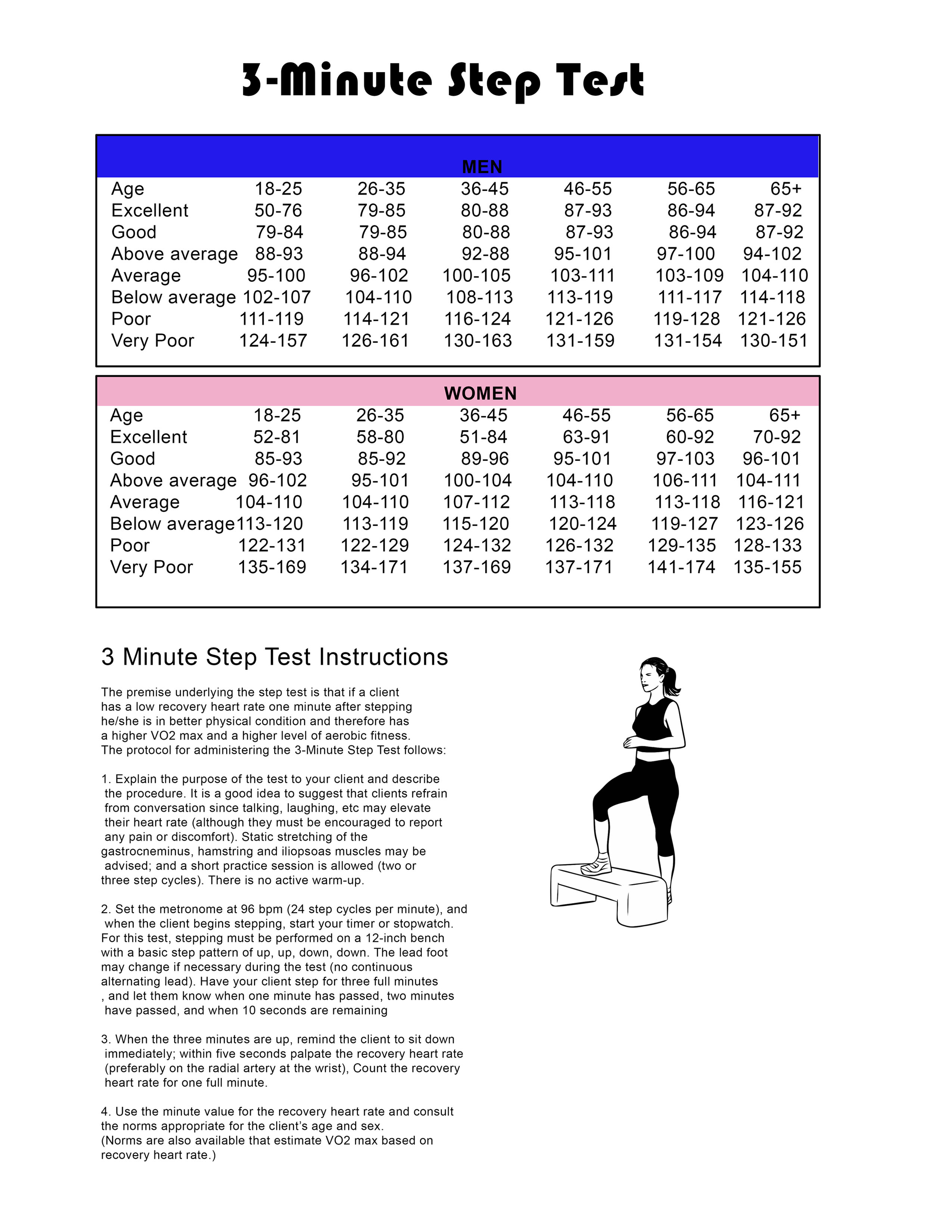Here's how to administer the 3 minute step test. You just need a metronome and a stopwatch.
The premise underlying the step test is that if a client has a low recovery heart rate one minute after stepping, he/she is in better physical condition and therefore has a higher VO2 max and a higher level of aerobic fitness.
The steps to conduct a 3-Minute Step Test follows:
1. Explain the purpose of the test to your client and describe the procedure. It is a good idea to suggest that clients refrain from conversation since talking, laughing, etc may elevate their heart rate (although they must be encouraged to report any pain or discomfort). Static stretching of the gastrocneminus, hamstring and iliopsoas muscles may be advised; and a short practice session is allowed (two or three step cycles). There is no active warm-up.
2. Set the metronome at 96 bpm (24 step cycles per minute), and when the client begins stepping, start your timer or stopwatch. For this test, stepping must be performed on a 12-inch bench with a basic step pattern of up, up, down, down. The lead foot may change if necessary during the test (no continuous alternating lead). Have your client step for three full minutes, and let them know when one minute has passed, two minutes have passed, and when 10 seconds are remaining
3. When the three minutes are up, remind the client to sit down immediately; within five seconds palpate the recovery heart rate (preferably on the radial artery at the wrist), Count the recovery heart rate for one full minute.
4. Use the minute value for the recovery heart rate and consult the norms appropriate for the client’s age and sex. (Norms are also available that estimate VO2 max based on recovery heart rate.)
Download 3 minute step test norms chart (11" by 8 1/2")
Download medium 3 minute step test norms chart (17" by 11")
Sources: These instructions and chart was taken from
Personal Fitness Training: Theory & Practice


